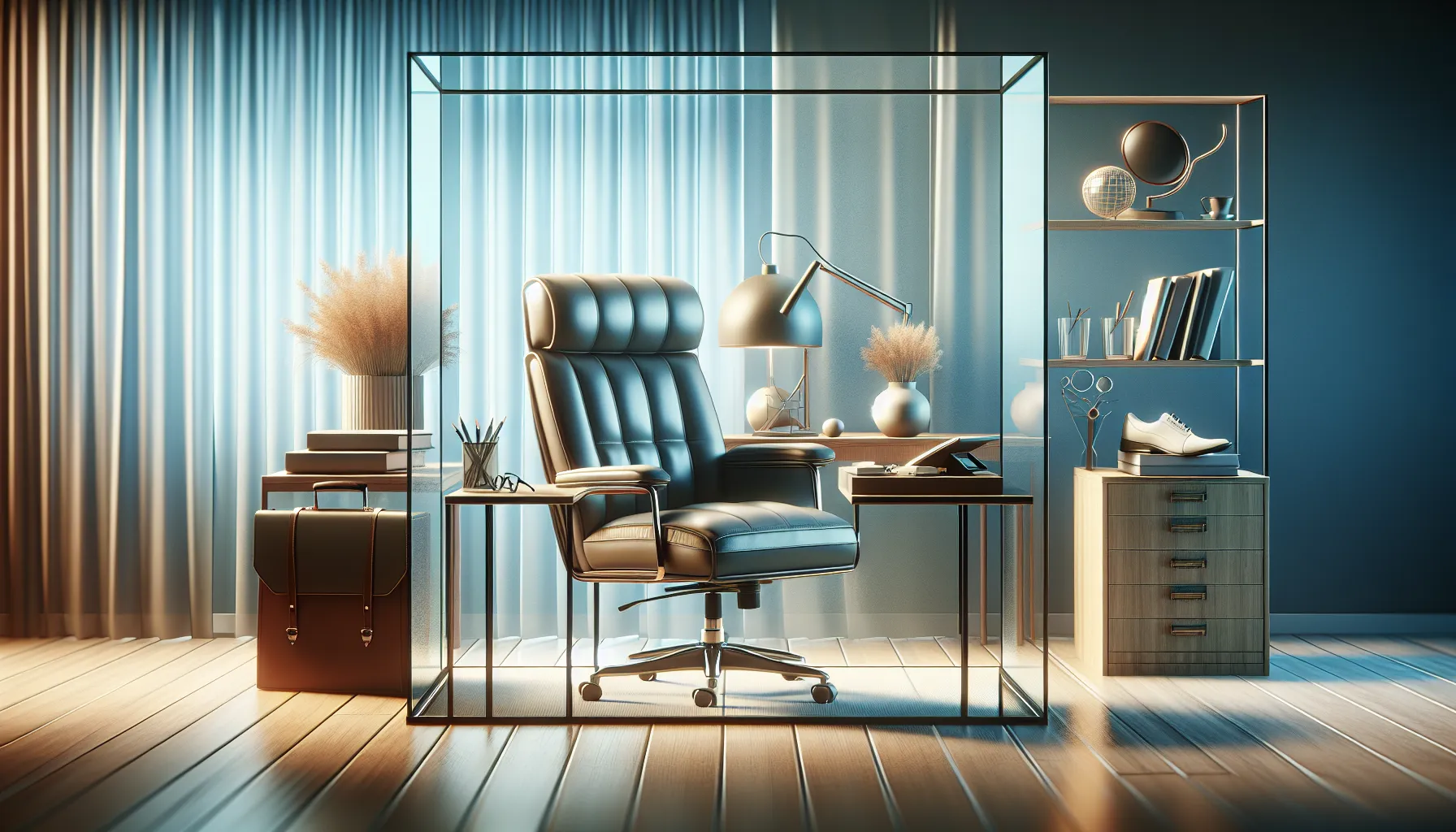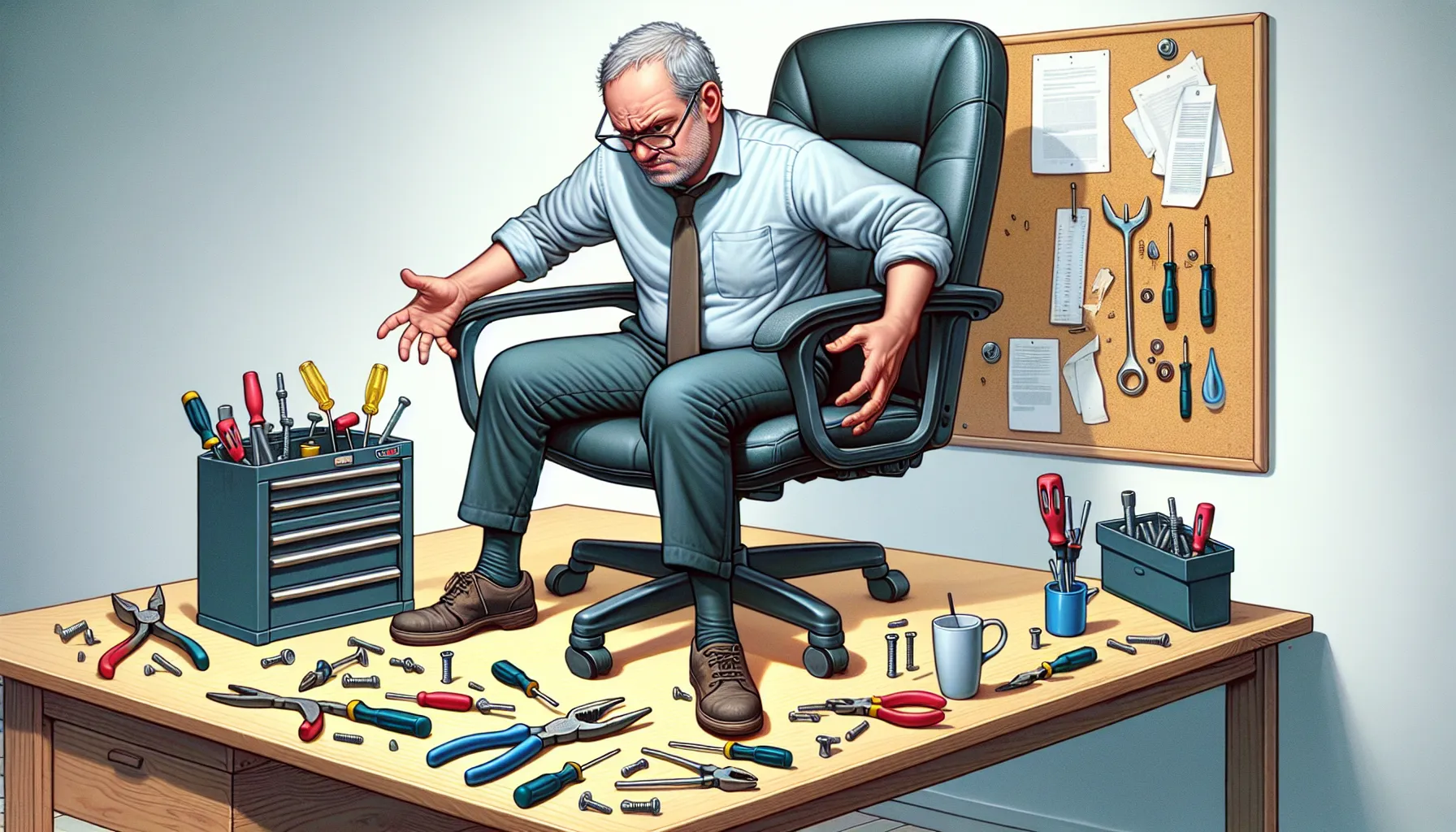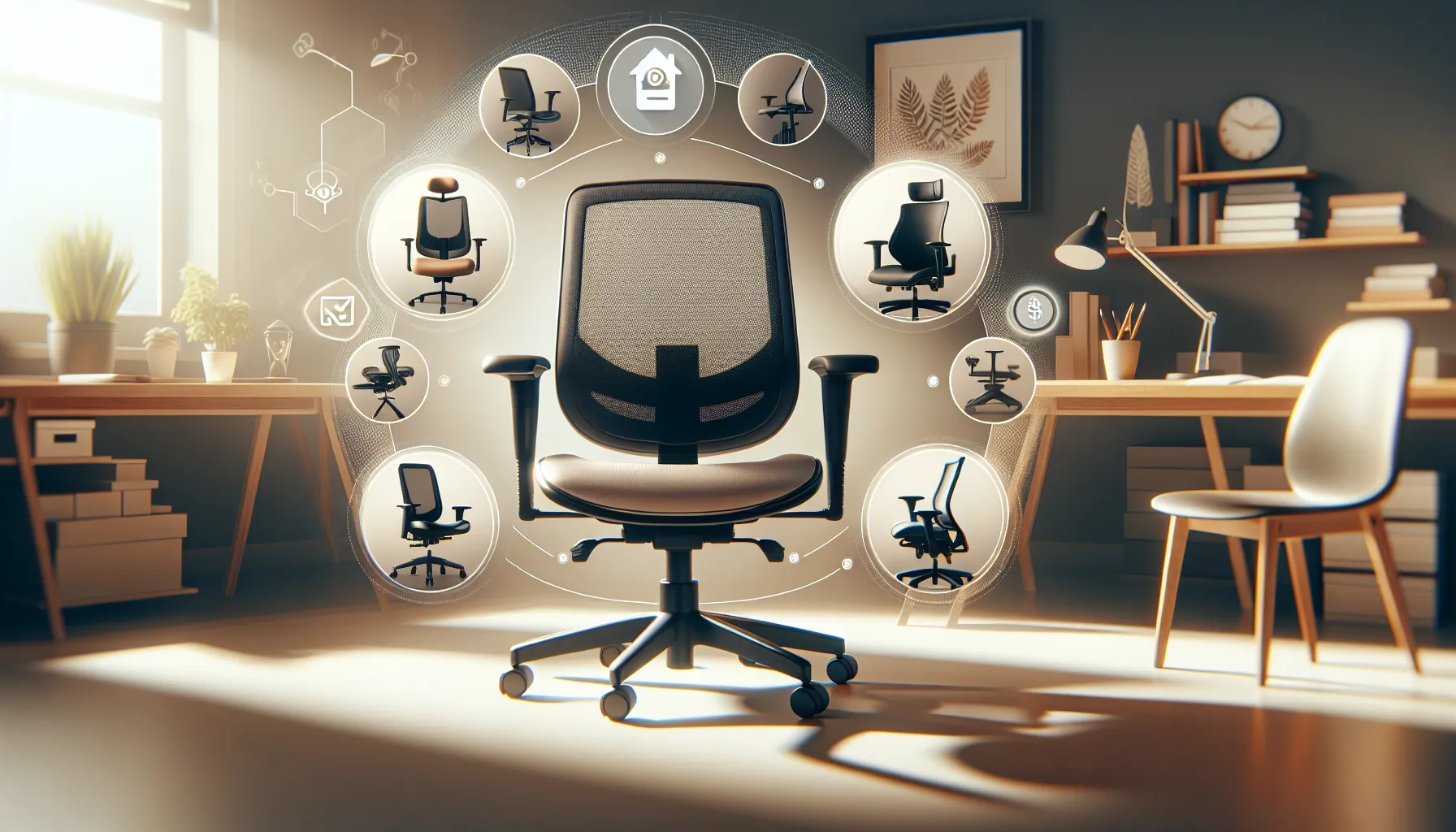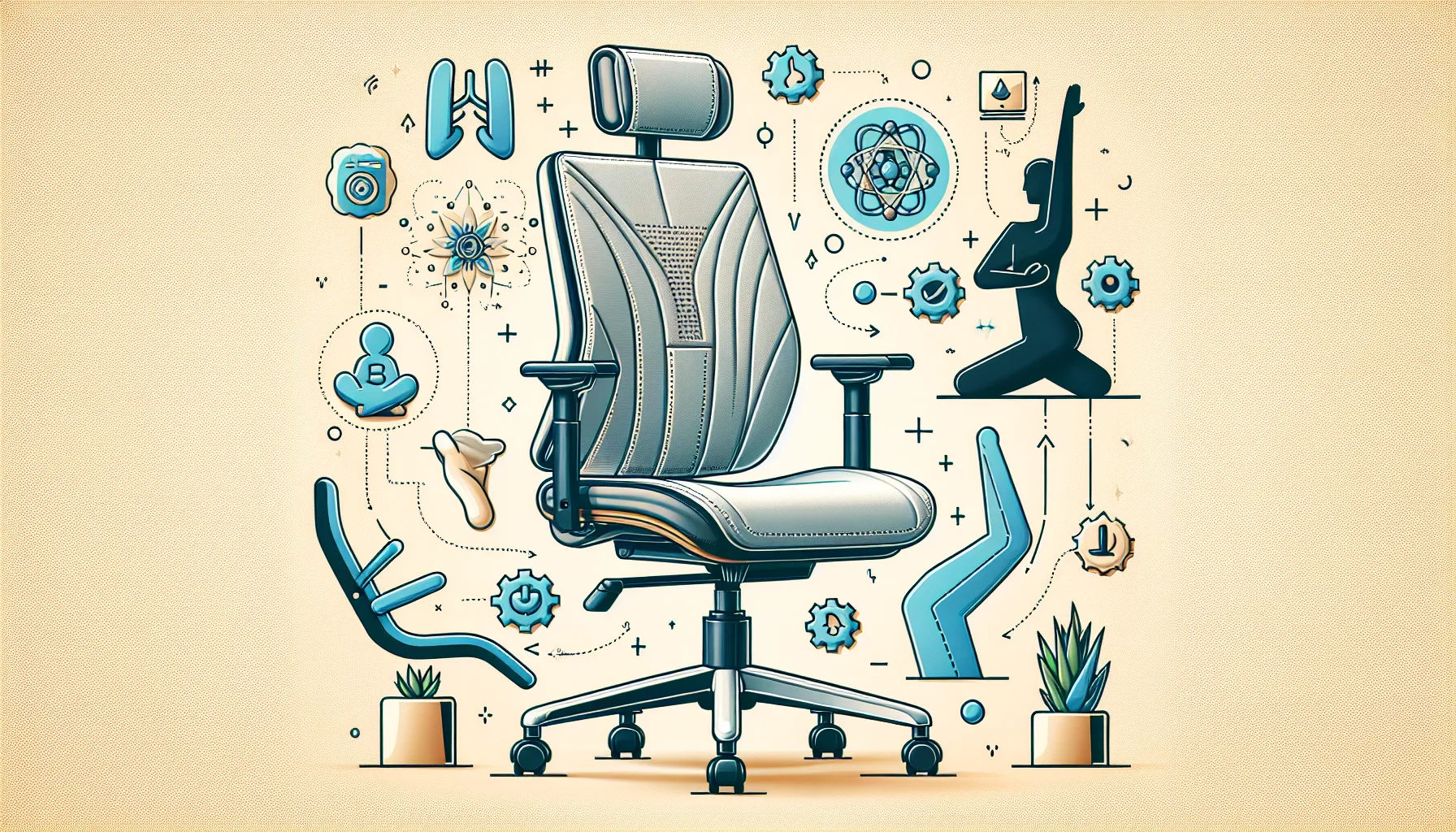

Having a comfy spot to sit while we tackle tasks, homework, or when we’re just chilling with a game or movie, is super important. But what if the chair you’re parked in keeps letting you down — literally? If you’ve ever plopped down to get some work done, only to find yourself slowly sinking like you’re in quicksand, you know exactly how annoying a sinking desk chair can be.
Imagine this: you’ve got your snacks, your drink, and you’re ready to conquer that essay or dive deep into a game. You sit down, get all comfy, and then… you start to sink. Slowly but surely, your chair betrays you, moving downward when all you want is to stay put. This isn’t just annoying; it messes with your focus and can throw off your whole vibe. Why does this happen? It’s usually because something’s up with the chair’s gas lift — that’s the part that lets you adjust the chair’s height. Over time, it can get worn out or leak, and that’s when the sinking act starts.
Now, you might think, "It’s just a chair; no big deal," but hear me out. A stable chair is like the foundation of a house. If it’s shaky or keeps moving, everything else feels off. For starters, a chair that doesn’t stay put can be a real pain, literally. It can make you sit in weird positions to try and stay comfortable, which isn’t good for your back or posture. Plus, trying to focus on your work or enjoy some downtime when you’re constantly adjusting your seat is a real mood killer.
Having a chair that’s reliable means one less thing to worry about. It lets you keep that energy and focus where it matters — on your tasks, goals, or kicking back and relaxing. A good chair supports not just your body, but your ability to do your best, whether that’s acing a test, crushing it at work, or winning at your favorite game.
When your desk chair keeps sinking, it can be super annoying, especially when you’re trying to focus on homework or a cool project. Let’s look at some reasons why this might be happening. By understanding these reasons, you can figure out how to fix it or tell an adult what’s going on so they can help.
The gas cylinder is like the heart of your desk chair’s height adjustment system. It uses air pressure (kind of like a balloon but way stronger) to keep your chair up when you adjust it. If this cylinder gets damaged, your chair might start sinking like a ship because it can’t hold the air pressure well anymore. This can happen from lots of use or accidentally hitting it hard against something.
Chairs have lots of screws and bolts that keep everything tight and in place. Think of them like the pieces of a LEGO set; if some pieces start to get loose, the structure might not stay up as it should. Over time, these parts can get loose from all the moving and adjusting you do. If they’re not tight, parts of the chair, especially the mechanism that controls the height, might not work right, making your chair sink.
Underneath your seat, there’s a mechanism that works with the gas cylinder to adjust the height and sometimes even tilt the chair. This mechanism has a lot of moving parts and can wear out after a lot of use. Imagine a favorite toy that doesn’t work like it used to because it’s been played with a lot. When this mechanism wears out, it might not catch and hold your chair up, leading to the sinking feeling.
Sometimes the problem is not a broken part but just incorrect settings. Desk chairs have different knobs or levers for height, tilt, and sometimes tension. If these aren’t set right, the chair might not stay in the position you want it to. It’s like when you’re playing a video game and the controls aren’t set right, making everything harder to control. Making sure these settings are correct can sometimes stop your chair from sinking.
Understanding these reasons can help you or an adult figure out how to fix the chair or know if it’s time to get a new one. Nobody wants a sinking chair, especially when you’re in the middle of something important or fun!
I never thought a simple piece of furniture could cause me so much frustration. For weeks, I struggled with my desk chair constantly sinking every time I sat down to work. At first, I couldn’t figure out why this was happening, but after reading up on the topic, I discovered the possible reasons behind this annoying issue.
I checked the gas cylinder, tightened all the screws and bolts, and made sure the seat mechanism was not worn out. I even adjusted the settings multiple times to no avail. Despite all my efforts, my desk chair continued to sink slowly but surely.
After exhausting all troubleshooting options, I finally decided to purchase a new chair. As soon as I sat down on my new, sturdy desk chair, I felt an immediate sense of relief. No more sinking, no more readjusting every few minutes. It was a small victory, but it made a world of difference in my daily work routine.
From that day on, I made sure to take better care of my desk chair, ensuring that it would never sink on me again. It may have been a minor inconvenience, but dealing with a sinking chair was a lesson in patience and problem-solving that I won’t soon forget.

When your desk chair keeps sinking, it can be really annoying, especially if you’re trying to concentrate on your homework or any task at hand. You might feel like you’re slowly shrinking or playing a weird game of musical chairs where you always end up lower than you started. Fortunately, there are several ways to fix a sinking desk chair, so you don’t have to feel like Alice in Wonderland after she drinks the potion that makes her small.
Most modern desk chairs have a gas cylinder that controls the height of the chair. It works like a magic wand that makes the chair go up and down. Over time, this cylinder can wear out or leak, causing your chair to sink. The good news is that you can replace the gas cylinder.
To do this, you’ll need the help of an adult and some tools, typically a wrench and a rubber mallet. You can buy a new gas cylinder from a furniture store or online. Just make sure it’s the right size for your chair. Then, follow the instructions to remove the old cylinder and put in the new one. It’s a bit like putting together a puzzle or building a Lego set, but with a bit more muscle.
Sometimes, the solution is simpler than you think. Desk chairs are held together by screws and bolts, and over time, these can become loose. When they do, parts of the chair might not fit as tightly as they should, which can make the chair feel wobbly or cause it to sink.
With a screwdriver or an Allen wrench (that funny-looking L-shaped tool), you can tighten these screws and bolts. It’s a good idea to check each one because even if just one is loose, it can affect the whole chair. Remember, righty-tighty, lefty-loosey!
The moving parts of your chair, especially the seat mechanism that goes up and down, can get sticky over time. Dust, grime, or just old lubricant can make it hard for parts to move smoothly. When this happens, your chair might not stay up as it should.
Lubricating the seat mechanism can help. You can use WD-40 or any silicone-based lubricant. Just spray a little on the moving parts under the seat (you might need an adult to help flip the chair over safely). This is like giving your chair a spa day, helping it move smoothly and work better.
Finally, sometimes the problem is not with the chair but with how we use it. Make sure you’re adjusting your chair correctly. Most chairs have a lever under the seat that lets you adjust the height. Sit on your chair, lift the lever, and adjust the seat to the height you want. Sometimes, you need to put a little weight on the seat to make it go down, or you might need to stand up a bit to let it rise.
If your chair keeps sinking even when you’re not sitting on it, or if it won’t stay up when you adjust it, then it’s a sign that one of the other problems we talked about might be happening.
Fixing a sinking desk chair doesn’t have to be a huge headache. With a little bit of detective work and some basic tools, you can make your chair as good as new. Plus, it’s a great way to learn a bit more about how things work and feel proud of fixing something with your own two hands.
| Issue | Description | Potential Solution |
|---|---|---|
| Worn-out Gas Cylinder | Over time, the gas lift cylinder that allows for height adjustments can wear out, causing the chair to sink. | Replace the gas lift cylinder. This part can typically be purchased from the chair manufacturer or a third-party supplier. Examples: Steelcase, Herman Miller, DXRacer. |
| Loose Screws and Bolts | Screws and bolts that hold the chair mechanism together can become loose due to regular movement and use. | Regularly check and tighten all screws and bolts. Use a suitable screwdriver or Allen wrench depending on the chair model. |
| Insufficient Lubrication | Lack of lubrication can cause the chair’s height adjustment mechanism to stick or malfunction, leading to sinking. | Apply a suitable lubricant to the mechanism. WD-40 or a silicone-based lubricant is commonly used for this purpose. |
| Improper Chair Adjustment | Not adjusting the chair properly according to the manufacturer’s guidelines can also lead to sinking issues. | Refer to the user manual for proper adjustment techniques specific to your chair model. Adjust the tension and height settings as recommended. |
To stop your desk chair from constantly sinking, you may need to replace the gas cylinder if it is worn out or leaking. This can be done by purchasing a new gas cylinder and following the manufacturer’s instructions for installation.
If your desk chair keeps sinking even after tightening the screws and bolts, the issue may be with the internal mechanisms of the chair. In this case, lubricating the seat mechanism with a silicone-based lubricant can help fix the problem and prevent the chair from sinking.
If your desk chair continues to sink even after adjusting it properly, you may need to inspect the chair for any visible damage or wear. If the chair is still under warranty, consider contacting the manufacturer for further assistance or replacement parts.

Keeping your desk chair from sinking can be crucial for maintaining comfort and promoting good posture during long periods of work or study. Here are some effective ways to prevent your chair from letting you down—literally.
The most common reason a desk chair starts to sink is due to a faulty pneumatic cylinder. This is the part that allows the chair to adjust up and down. Every few months, give it a look to see if there are any signs of damage or wear. If it looks worn out, it might be time to replace the cylinder or get professional help.
Over time, the screws and bolts holding your chair together can become loose due to regular movement. Check these parts regularly and tighten them if necessary. This simple step can not only prevent sinking but can also extend the life of your chair.
It might be tempting to lean back in your chair, especially during long sessions at your desk, but doing this too often can put extra pressure on the chair’s mechanism, leading to wear and tear. Try to maintain a balanced posture and use the backrest without pushing it to its limits.
Every chair is designed with a weight limit and intended use in mind. Using the chair in ways it was not designed for, such as standing on it to reach high places, can damage the mechanism and lead to sinking. Make sure you’re aware of your chair’s limitations and adhere to them.
Investing in a high-quality chair might seem like a big expense upfront, but it can save you money and hassle in the long run. Look for chairs from reputable brands known for durability and robust support systems. Chairs from companies like Herman Miller, Steelcase, or HON are known for their long-lasting constructions.
Before making a purchase, check online reviews to see what other users have said about the chair’s longevity and resistance to common issues like sinking. Also, look for products that offer extended warranties, which can be a sign of a manufacturer’s confidence in their chairs’ durability.
By following these prevention tips, you can enjoy a comfortable, stable seating experience without the annoyance of a sinking chair. Regular maintenance, proper use, and investing in a quality chair can go a long way in keeping you focused and comfortable at your desk.
Check the pneumatic cylinder: The most common reason for a sinking desk chair is a faulty pneumatic cylinder. Inspect the cylinder for any leaks or damage, and if needed, replace it with a new one.
Adjust the height settings: Sometimes, the height settings on a desk chair can be accidentally changed, causing it to sink. Make sure the chair is set to the correct height and lock it in place.
Tighten the screws and bolts: Loose screws and bolts can also contribute to a sinking desk chair. Check all the hardware on the chair, tighten any loose screws, and replace any missing ones.
Use a chair saver kit: If the issue persists, consider purchasing a chair saver kit. These kits come with a special insert that can be placed under the chair’s hydraulic cylinder to prevent it from sinking.
Upgrade to a standing desk: If all else fails, it might be time to consider investing in a standing desk. Standing desks eliminate the need for a chair altogether, ensuring you never have to deal with a sinking chair again.

Let’s do a quick flashback on what we’ve talked about. The main reasons your desk chair keeps going down are usually because of a problem with the gas lift cylinder – that’s the part that goes up and down when you adjust your chair’s height. Sometimes, this cylinder can leak its gas, which means it can’t hold your weight anymore and causes the chair to sink. Another reason could be because of a damaged seat adjustment lever, the thing you typically push or pull to move your chair up or down. And lastly, too much weight on the chair or just general wear and tear over time can cause the sinking issue too.
No one wants to be constantly sinking down while trying to work or study. It’s not only annoying but bad for your posture too. Sitting in a chair that’s too low can make you slouch, which isn’t good for your back or neck. That’s why it’s super important to fix a sinking chair as soon as you can. Waiting too long might make things worse, like causing more damage to the chair or even leading to painful back and neck problems for you.
So, now you know why your chair might be giving you a mini rollercoaster ride every time you sit on it. Remember, the quicker you figure out the problem and get it fixed, the better. If it’s something simple, you might be able to do it yourself with a few tools. But if it seems like a big issue, you might want to think about getting a new chair or asking someone who knows more about fixing chairs for help.
Having a good, sturdy chair is super important, especially if you spend a lot of time sitting down at a desk. Keep an eye on your chair, and make sure it’s always in tip-top shape. Your back (and your sanity) will thank you!







